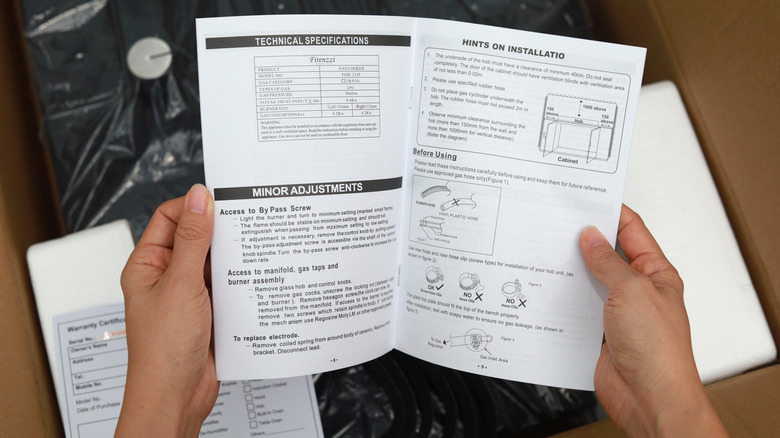The Annoying Step You Should Never Skip After Buying A New Kitchen Appliance
We may receive a commission on purchases made from links.
Whether you're doing a remodel or your old appliance reached the end of its life, buying new appliances can be exciting, no matter how big or small. Before you start using it, make sure you don't overlook this tip: Read the instruction manual. It's no one's favorite part, likely due to lingering fear from building Ikea furniture, but the manual holds everything from warranty information to proper cleaning and safety guidelines. It would be a shame to set up your appliance in a way that makes it unsafe for your household, like microwaving things that should never go inside a microwave.
The manual will explain how to set up your appliance and start making the most of it. The setup instructions could even be one of the best ways to save money on kitchen appliances by preventing you from making a mistake on the first use. You might even find that there are ways to use your appliance that are more ideal than others, such as a specific way to load a dishwasher or how often you should be cleaning a new toaster oven. If you've ever realized long after buying something that it has more features than you initially thought, just know that the feature is probably listed in the user manual. You may never know if your new fridge's ice maker can make different shapes without a peek at the instructions.
Most user manuals can be printed out from the company website
Don't panic if, in your excitement to set up your new purchase, you accidentally misplaced or threw out the instruction manual. Most manufacturers make instruction manuals readily available online; you just need to know the make and model of your appliance. Even manuals for older appliances may be found on vintage collectors' websites. Once you find the manual, you can either download it to your phone or print out a PDF version to keep on hand. If the manual isn't available online, you can likely contact the customer service department of the manufacturing company to inquire about receiving one.
They're also likely to have the answers to any questions you may have in the meantime or provide helpful information you didn't realize you needed. Even if you never look at the instruction manuals again, it's good to keep them around. It's a good habit to store the manuals together in a binder or filing cabinet. You can figure out which sorting system works best for your household. This way, if you need to replace a part or troubleshoot anything, you know where to go to hopefully find the answer you're looking for. This is also helpful if you ever need a specific model number of a large appliance that's challenging to move. Instead of shuffling the fridge out of its place, just look at the instruction booklet.

